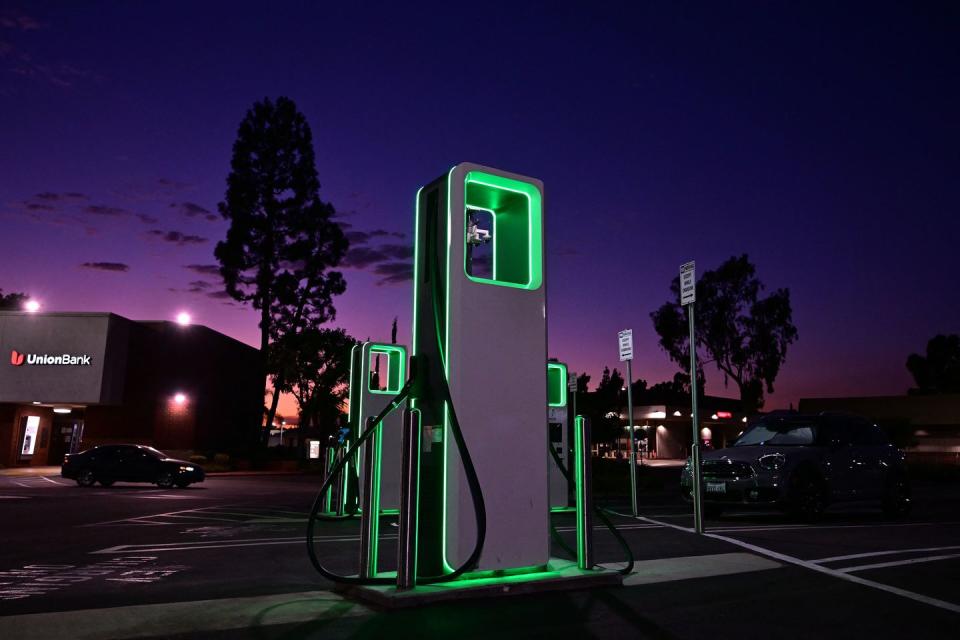Perhaps No Surprise, But Swanky Towns Get the EV Chargers, Study Finds

Electric vehicle charging remains a center point of tensions around widespread adoption, with differing views on charging standards growing as of late.
A new study finds charging infrastructure is not being built evenly across the US, with rural counties and low-income communities often lacking charging access—while also showing little regional demand for EVs.
Nearly 72% of public EV charge ports are in the top fifth of counties based on income, with CARB-compliant states dominating the list as well, according to a study by Bumper.com
Electric vehicle charging is a divisive topic. Whether you focus on charging speed, charging ports, or the grid infrastructure supporting it all, there are seemingly dozens of working theories on the table and even more business moves to be made by suppliers and automakers alike. But this kind of future-of-energy discussion doesn't apply to everyone, as studies show that EV charger availability in the US is far from equitable.
Using county-by-county data taking into account income level, poverty level, and unemployment level (among other parameters like health insurance take rates and general access to cars), the folks at Bumper have released a study showing just how drastic the regional disparity in EV charger availability is. While EV charging is arguably still in its fledgling phase, with a lack of industry-wide standardization and reliability plaguing even the best networks like Tesla's Superchargers, natural patterns of supply-and-demand are leaving some areas without access in the federal push for an all-electric transition.

Labeled as charging deserts, certain areas of the United States are barely electrified, according to the study by Bumper. For starters, all of the 131,195 publicly available charge ports documented by the National Renewable Energy Laboratory are concentrated in 1997 of the 3143 US counties, primarily in metropolitan cities across the US as well as certain high-dollar but otherwise outlier counties like Teton County in Wyoming. Alternatively, the remaining 1146 counties (36.5% of the country) lack public charging infrastructure altogether, with the majority of these counties being rural and in states with little to no EV incentives.
In other metrics, that means states with a strong EV presence, like California or Massachusetts, have anywhere from seven to 21 chargers per 10,000 residents whereas some counties in the South and Midwest have as few as one or two chargers per 10,000 residents. The average figure for the US is 2.94 charge ports per 10,000 people, for reference, though sub-$24,824 annual income areas are closer to 1.87 chargers per 10,000 residents. The study from Bumper confirms that generous state incentives for EVs and higher regional income levels often go hand-in-hand in determining where and how EV chargers are installed.

By examining counties through per-capita income and charging availability, researchers found that 71.68% of public EV charge ports are in the top fifth of counties based on income, with an additional 15.89% of charge ports located in counties (with some of these counties being in states like Montana that lack EV subsidies) within the second-highest income group. That means the rest of the country's counties have access to a mere 12% of public charging stations. And when it comes to a lack of charging infrastructure entirely, around 59% of these counties (371 of them) fall within the lowest income group.
But why is this trend playing out in a way that could appear socially skewed? Beyond a county-by-county analysis, research also shows certain states have largely rejected charging infrastructure. Namely, Louisiana, Mississippi, and Alabama are anywhere from 75% to 84% below the national average for charger availability, though major cities in all three states come close to the national average. And it's not just the South that is timid on EVs, as Western states like Idaho and North Dakota only show 1.3 chargers per every 10,000 residents. However, neither state offers any sort of tax break to EV owners while simultaneously charging EV owners a recurring, annual registration fee upwards of $130, giving consumers even less of a reason to go electric out West.
Looking at the data visualized map from Bumper, the prevalence of the California Air Resources Board's ZEV goals is clear, with complying states like New Jersey and Washington featuring high levels of charging infrastructure (even in lower-income areas). By comparison, a number of the states that lack charging infrastructure (and have high poverty levels) don't subscribe to California's emissions regulations, in part because they often don't align with these states' material conditions or current EV demand.
Similarly, it's important to remember that electric vehicles are still pricey, with around 42% of shoppers citing high costs as the main detractor, according to AutoList. In many cases, there is little to no financial or infrastructural incentive from local or state governments either, pushing residents of lower-income states further from EV adoption at this time. And if states like Mississippi and Montana aren't subsidizing the way for mass EV adoption, especially in rural, agricultural-based counties, there isn't much reason for charging suppliers like Electrify America or Blink Charging to follow. The business case just isn't there, nor is the consumer demand in many parts of the US, posing a challenge that federal leaders will have to approach carefully in coming years.
Do you live in an area without charging infrastructure? If so, would the addition of more chargers spark your interest in EVs? Please share your thoughts below.

 Yahoo Autos
Yahoo Autos 